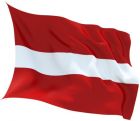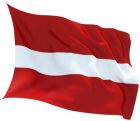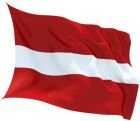| Country | Grants | Loans |
|---|---|---|
Latvia 2013/14 - grants and loans | Public grants to cover tuition fees are allocated on the basis of academic merit. These grants are primarily available in priority areas;
currently natural sciences, computer sciences and engineering.
Other public grants are traditionally available based on academic merit. Recently, more need-based criteria are taken into account. Disabled or orphaned students with families, from large families or in economic need are treated favourably. State budget grants are LVL 70/month (per 10 months) for the first and second cycle. Approximately 4 000 students receive state budget grants each semester (11.5 % of students studying in the state subsidized study places) (2012/13). Higher grants are available through the European Social Fund activities supporting the implementation of Master’s study programmes (specifically for students in the following priority study fields: natural science, mathematics, IT, engineering, health care, environmental sciences and creative industries). In 2012/13, 40.8 % of full time Master students in these priority study fields received this grant. | Two types of loans exist. The first is to cover tuition costs and the second to cover living costs with a cap of LVL 120/month. Loans need to be paid back 12 months after the end of the degree programme. 11 % of students take out loans (2012/13). |
Latvia 2015/16 - grants and loans | Public grants (state-subsidised study places) are allocated on the basis of academic merit. These grants are primarily available in priority areas; currently natural sciences, computer sciences and engineering. Other public grants are traditionally available based on academic merit. Recently, more need-based criteria are taken into account. Disabled or orphaned students with families, from large families or in economic need are treated favourably. These state budget grants are EUR 99.60/month (per 10 months) for the first and second cycle. Only 14 % of all students studying in state financed places at public HEIs receive this funding support. | Two types of loans exist. The first is to cover tuition costs and the second to cover living costs with a cap of EUR 170.74/month. Loans need to be paid back 12 months after the end of the degree programme. In 2014/15, about 13 % of fee-paying students benefited from the loan for tuition costs, and 9 % of state subsidised students took out a loan for living expenses (2014/15). Both in 2014 and 2015 the Government has published a list of number of occupations considered to be significant for national economic development, and the state will cover part of the student loan for those students studying in these fields. |
Latvia 2016/17 - grants and loans | Public grants, primarily based on academic merit, are available only to full-time students studying on state- subsidised study places. Recently, more need-based criteria are taken into account. Disabled or orphaned students with families, from large families or in economic need are treated favourably. The amounts are EUR 99.60/month (per 10 months) for the first and second cycle. Approximately 13 % of 1st cycle students, 8 % of 2nd cycle students and 8 % of short-cycle students studying receive this funding support. | Two types of loans exist, the first to cover tuition costs and the second, capped at EUR 170.74/month to cover living costs. Repayment needs to start 11 months after the end of the degree programme. In 2015/16, 12 % of fee- paying students benefited from loans, and this percentage is in decline since 2009. The state covers loans for students studying in fields considered significant for national economic development. |